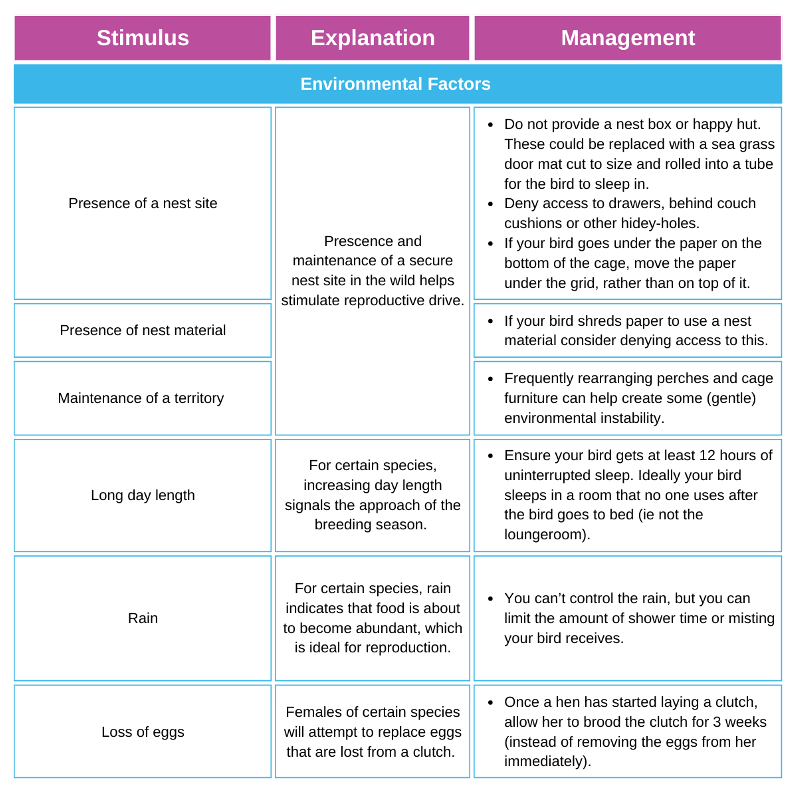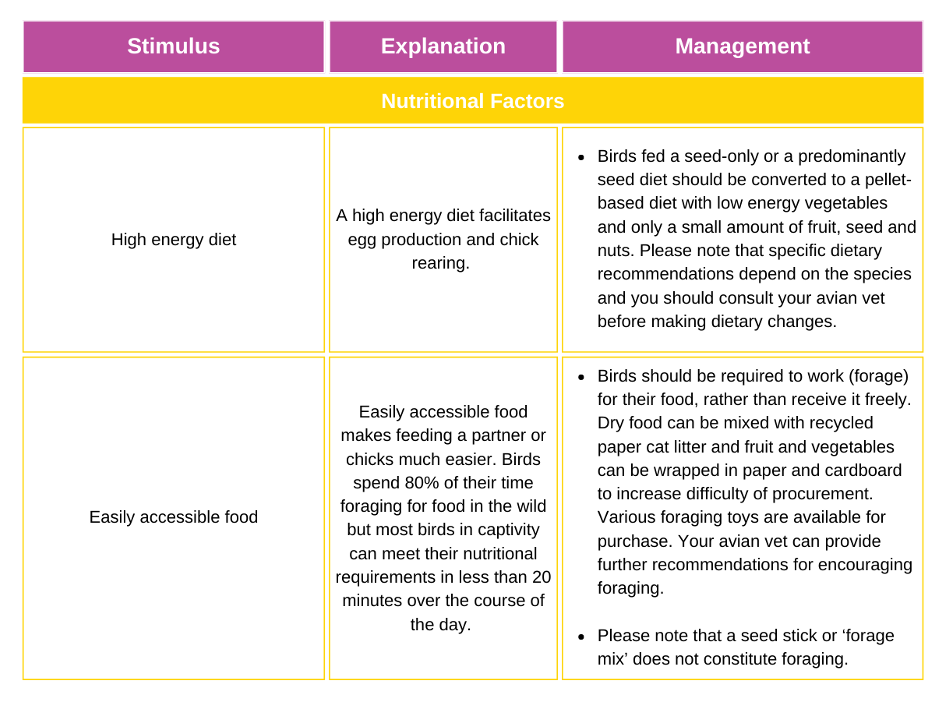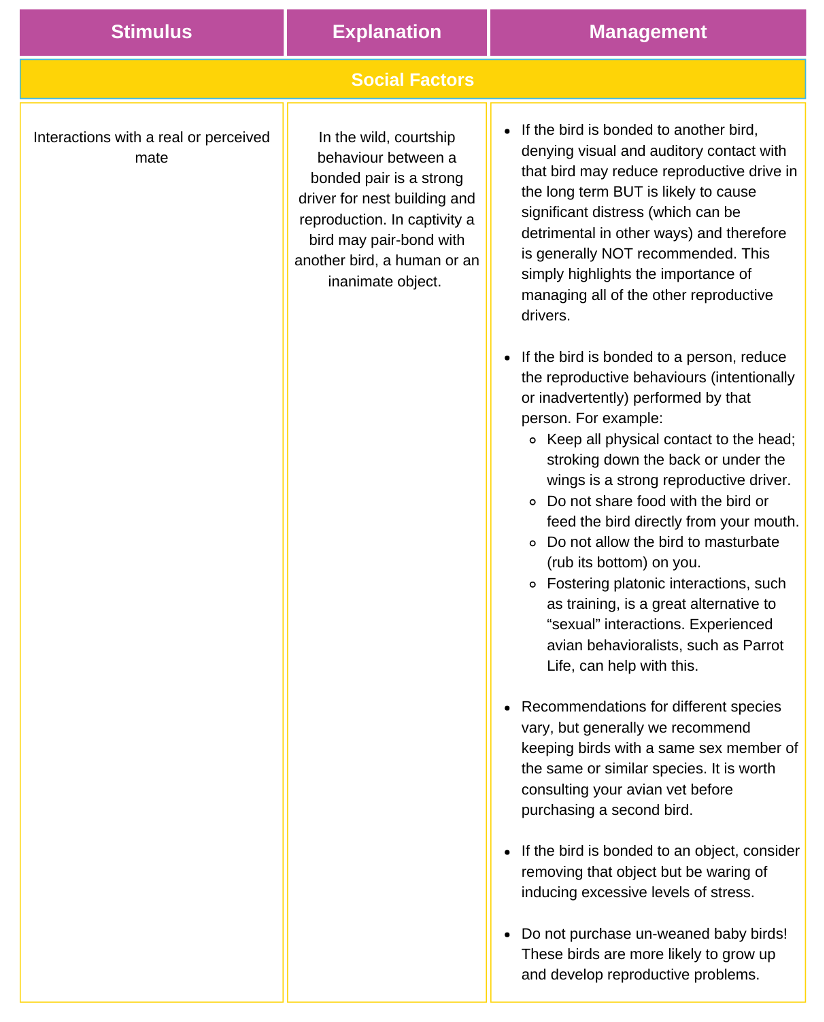Behavioural and medical disorders relating to excessive reproductive drive are some of the most common problems we encounter in both female AND male pet parrots. Often owners are completely unaware that their pet is experiencing excessive reproductive drive until it becomes a life-threatening emergency or results in serious problematic behaviours.
Generally, parrots are not domesticated animals and are therefore have very strong reproductive instincts. Unfortunately, many of the ideal conditions for breeding are very easily (and inadvertently) provided in captivity. Inappropriate hand rearing practices are rife in the pet bird industry and as a result many pet birds probably self-identify as human. This further adds to the problems faced with reproductive drive as pet birds often have expectations of their owners that simply cannot be fulfilled!
The information contained here is therefore important for ALL parrot owners, not just those with a pet being treated for a reproductive problem.
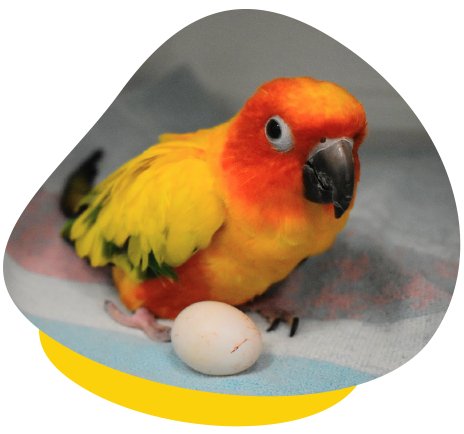
What can cause excessive productive drive in companion birds?
Here is a list of just some of the problems we see associated with excessive reproductive drive:
Physical
- Egg binding
- Chronic egg laying
- Oviduct impaction
- Internal ovulation
- Prolapse (in both males and female)
Behavioural
- Feather damaging behaviour and self-mutilation
- Aggression (often at dangerous levels of severity)
- Separation anxiety
- Screaming
- Chronic masturbation
How to prevent excessive reproductive drive
Many parrot owners may look at this list and think “My bird doesn’t have any of these problems, I don’t need to be concerned.” To this we say, prevention is better than cure.
Parrots can go years without displaying these problems before, seemingly out of the blue, becoming egg-bound or hyper-aggressive, for example.
Sadly, aggression (which often occurs in conjunction with excessive reproductive drive) is one of the most common reasons that pet birds get rehomed or relinquished to shelters.
Put very simply, parrots receive certain stimuli that stimulate the brain to start a hormone cascade that results in activation of the ovary (most female birds only have one ovary) or testicles.
As a result, the level of estrogen or testosterone produced by these organs rises to facilitate reproduction. In the captive setting this can have many unwanted consequences, as listed above.
Therefore, if a parrot is not being bred (and we ONLY recommend breeding by those with extensive knowledge and experience) it is in our best interest AND the parrots’ best interest to reduce the stimulation on the ovary or testicles.
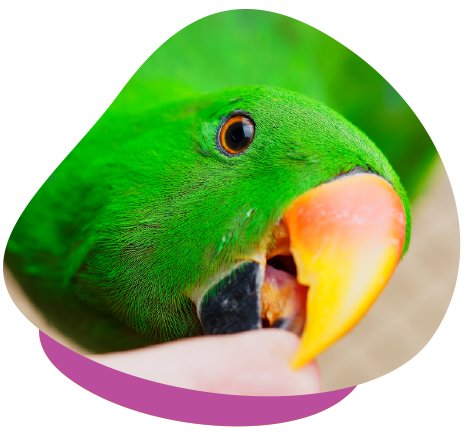
So, how do we do that? The table below categorises the various reproductive stimuli into four main groups (environmental, nutritional, social and genetic), explains how they work and then provides recommendations to combat the stimulus in the captive environment.
Reproductive Stimuli - Environmental Factors
Reproductive Stimuli - Nutritional Factors
Reproductive Stimuli - Genetic Factors
Reproductive Stimuli - Social Factors
Sometimes, even when your manipulation of the environmental, nutritional, social and genetic factors is appropriate, a companion parrot may still develop reproductive problems. In these cases, we often use medications to help block the hormone cascade that is involved in reproductive. Although these medications are generally very safe, we prefer to manage what can be managed in husbandry, rather than just relying on the medication. The medications also tend to work better when paired with appropriate husbandry changes.
Veterinary Care For Your Pet Bird
If your flying friend is displaying unusual bird behaviour and you would like to discuss it with one of our qualified avian veterinarians,
get in touch with us, The Unusual Pet Vets are here to help.
